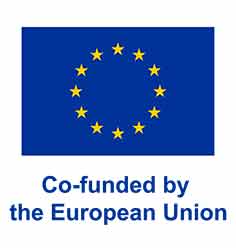Facts:
Data collection within the DCF is financed to 60 % by funds from the European Maritime, Fisheries and Aquaculture Fund (EMFAF).


We collect data on salmon in the Baltic Sea, which in turn forms the basis for analyses of salmon stocks and research on salmon. The goal is for Sweden to have long-term sustainable fisheries management that is based on scientific assessments of the size of the fished stocks.
In order to make scientific assessments, we collect data for salmon and trout annually. We do this on behalf of the EU and as part of the national data collection program (DCF - Data Collection Framework).
We deliver our data to the International Council for the Exploration of the Sea (ICES). ICES in turn carries out stock analyses and then delivers biological data and advice for the Baltic Sea to the EU, and to the North Atlantic Salmon Conservation Organization (NASCO) for the Atlantic. The data is used for the annual negotiations on catch quotas for the Baltic Sea and the Atlantic respectively.
Learn more about our data collection in the expandable menus below.
Today, commercial salmon fishing in the Baltic Sea consists of coastal fishing with fixed gear. There has been no commercial salmon fishing on the Swedish west coast since 2015.
We conduct fishery sampling four times a year at three different fishermen. We measure length and weight for all species we catch and for salmon we also record sex and age.
By recreational fishing for salmon we mean all fishing that is not commercial fishing, and that is carried out along the coast and in rivers, mainly with rods. However, fishing with fixed gear can also occur.
We also collect data from breeding fishing in the Dalälven River in Älvkarleby, as well as from the Umeälven River in Norrfors.
We also collect data for all life stages of salmon in some selected rivers.
We also collect data for all life stages of salmon in two additional rivers where we monitor the salmon for a few years at a time before moving to another river. We also monitor one river with a focus on trout.
The purpose of the selected rivers is to:
The methodology for estimating the number of migrating spawning fish, parr and smolt differs between the different rivers. When the salmon are on their way from the sea to the rivers to spawn, we count the number of spawning fish in several ways, for example by filming with a camera or by following the fish with an echo sounder in fish ladders or across rivers. We also identify individual fish using, for example, PIT tags (passive integration transponders; a pill-shaped cylinder of glass that houses a radio transponder containing a unique code), which are injected into the salmon at the smolt stage. Using this data, we can estimate the survival of the salmon in the sea.
We calculate the production of smolts by fishing according to the Swedish standard for sampling of fish with electricity at locations where the salmon grow up. When the young salmon have grown into smolts and migrate to the sea, we capture them in various types of traps. By tagging, releasing and then capturing the smolts again, we can evaluate the trap's capture efficiency and thus calculate the total migration in the river.
Data collection within the DCF is financed to 60 % by funds from the European Maritime, Fisheries and Aquaculture Fund (EMFAF).

Johan Östergren, Researcher
Department of Aquatic Resources, Institute of Freshwater Research, SLU
johan.ostergren@slu.se, +46 10 478 42 46, +46 703-46 14 29
The Assessment Working Group on Baltic Salmon and Trout (ices.dk)